Title : Decade-long surveillance of rotavirus genotype diversity pre- and post-vaccine introduction among under-five children with Diarrhoea at the university of Ilorin teaching hospital, Nigeria (2013–2023)
Abstract:
Background: Rotavirus remains a leading cause of severe childhood diarrhoea, contributing significantly to under-five morbidity and mortality worldwide. In August 2022, Nigeria introduced the rotavirus vaccine into its national immunization program. Continuous surveillance of circulating rotavirus genotypes is essential to monitor vaccine impact, detect shifts in strain distribution, and inform public health policy. The University of Ilorin Teaching Hospital (UITH), North-Central Nigeria, has conducted systematic rotavirus surveillance since March 2013, with high-quality laboratory performance validated by seven external quality assessments (100% concordance).
Objective: To characterize the prevalence and genotype distribution of rotavirus strains among children under five hospitalized with diarrhoea at UITH, before and after rotavirus vaccine introduction.
Methods: From March 2013 to December 2023, children under five years of age presenting with diarrhoea were consecutively enrolled at UITH. Clinical data and stool samples were collected. Samples were initially screened for rotavirus antigen using ELISA, and ELISA-positive specimens were genotyped via RT-PCR at the WHO regional reference laboratory (NMIMR). Surveillance data were managed using the WHO rotavirus surveillance module and analyzed in REDCap.
Results: Of 2,102 children hospitalized with diarrhoea, 589 (28.0%) tested positive for rotavirus. Of these, 533 (90.5%) were successfully genotyped. Pre-vaccination (2013–2022): The predominant G-genotypes were G1 (53.1%), G3 (16.0%), and G2 (11.7%), while predominant P-genotypes were P[8] (52.5%), P[6] (27.5%), and P[4] (7.2%). Mixed infections were common, with G-mixed (12.8%) and P-mixed (12.3%) genotypes detected. Post-vaccination (2022–2023): All genotyped strains were G1P[8], with no mixed genotypes detected.
Conclusion: Rotavirus genotype diversity in Ilorin reflects patterns observed in other African settings, with G1P[8] remaining predominant. However, significant pre-vaccine heterogeneity and the emergence of a uniform post-vaccine genotype suggest early vaccine impact and possible strain selection pressure. Continued surveillance is critical to monitor genotype shifts and guide vaccination strategies.


